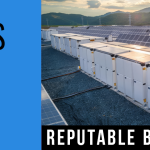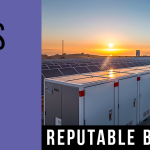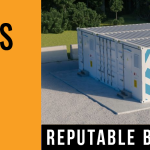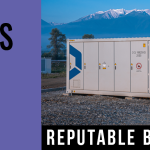 Photos taken during the 2012 Hurricane Sandy disaster almost literally turned the spotlight onto microgrids.
Photos taken during the 2012 Hurricane Sandy disaster almost literally turned the spotlight onto microgrids.
Images posted on social media and in the news during the storm showed swaths of Manhattan plunged into darkness as power outages cut off electricity to large parts of America’s biggest city.
Just as striking, however, were blossoms of light visible against the otherwise black skyline.
Many of these lighted outposts had separated from the grid and were now generating electricity on their own. These microgrids were islands of light in a sea of darkness. Facilities such as hospitals were able to provide critical services both during and after the storm because of microgrids.
Now, Ameren Corp. has completed a $5 million microgrid at its Technology Applications Center adjacent to the University of Illinois campus in Champaign, Ill. The facility is one of the only utility-scale microgrids in the United States that serves live customer loads on an actual utility distribution feeder.
If the grid-connected electric distribution line fails or is knocked out by a storm, the Ameren microgrid is intended to seamlessly transition to island mode and provide 180 residences and 12 commercial buildings with power from dedicated wind, solar, and natural gas resources, backed up by a bank of lithium-ion batteries.
The microgrid, which has already been show to work as intended, will now be tested in order to learn how it can improve electric reliability, says Ron Pate, Ameren Illinois senior vice president of Operations and Technical Services. It also will be tested to receive and respond to market price signals, potentially adding value to still wider microgrid deployment.
Click Here to Read Full Article
read more
 While the US continues to
While the US continues to  For every consumer electronics maker, the nascent electric car industry is a dream coming true. There is enough tech in electric cars—from infotainment systems to voice and facial recognition, software and parking sensors—to make an ambitious consumer electronics manufacturer cry with joy. There’s so much space to unleash your innovative drive. There is also growing competition, so it’s important to bet on the right EV/self-driving horse.
For every consumer electronics maker, the nascent electric car industry is a dream coming true. There is enough tech in electric cars—from infotainment systems to voice and facial recognition, software and parking sensors—to make an ambitious consumer electronics manufacturer cry with joy. There’s so much space to unleash your innovative drive. There is also growing competition, so it’s important to bet on the right EV/self-driving horse. The DOE’s SHINES program is part of the agency’s Grid Modernization Initiative that aims to improve the resiliency, reliability and security of the nation’s power grid. SHINES itself is the first DOE funding program that looks exclusively at connecting renewable power to storage.
The DOE’s SHINES program is part of the agency’s Grid Modernization Initiative that aims to improve the resiliency, reliability and security of the nation’s power grid. SHINES itself is the first DOE funding program that looks exclusively at connecting renewable power to storage. Called SkelGrid, the system is based on the firm’s curved graphene ultracapacitor technology, which is designed to provide high power and energy density.
Called SkelGrid, the system is based on the firm’s curved graphene ultracapacitor technology, which is designed to provide high power and energy density. Many of the innovations happening in the energy sector involve solving intermittency issues brought to the table by renewable energy darlings like photovoltaic solar and wind generation.
Many of the innovations happening in the energy sector involve solving intermittency issues brought to the table by renewable energy darlings like photovoltaic solar and wind generation. Intersolar Europe opens its doors this week in Munich, Germany, and with it comes ees Europe, an accompanying exhibition for batteries and energy storage systems.
Intersolar Europe opens its doors this week in Munich, Germany, and with it comes ees Europe, an accompanying exhibition for batteries and energy storage systems.



